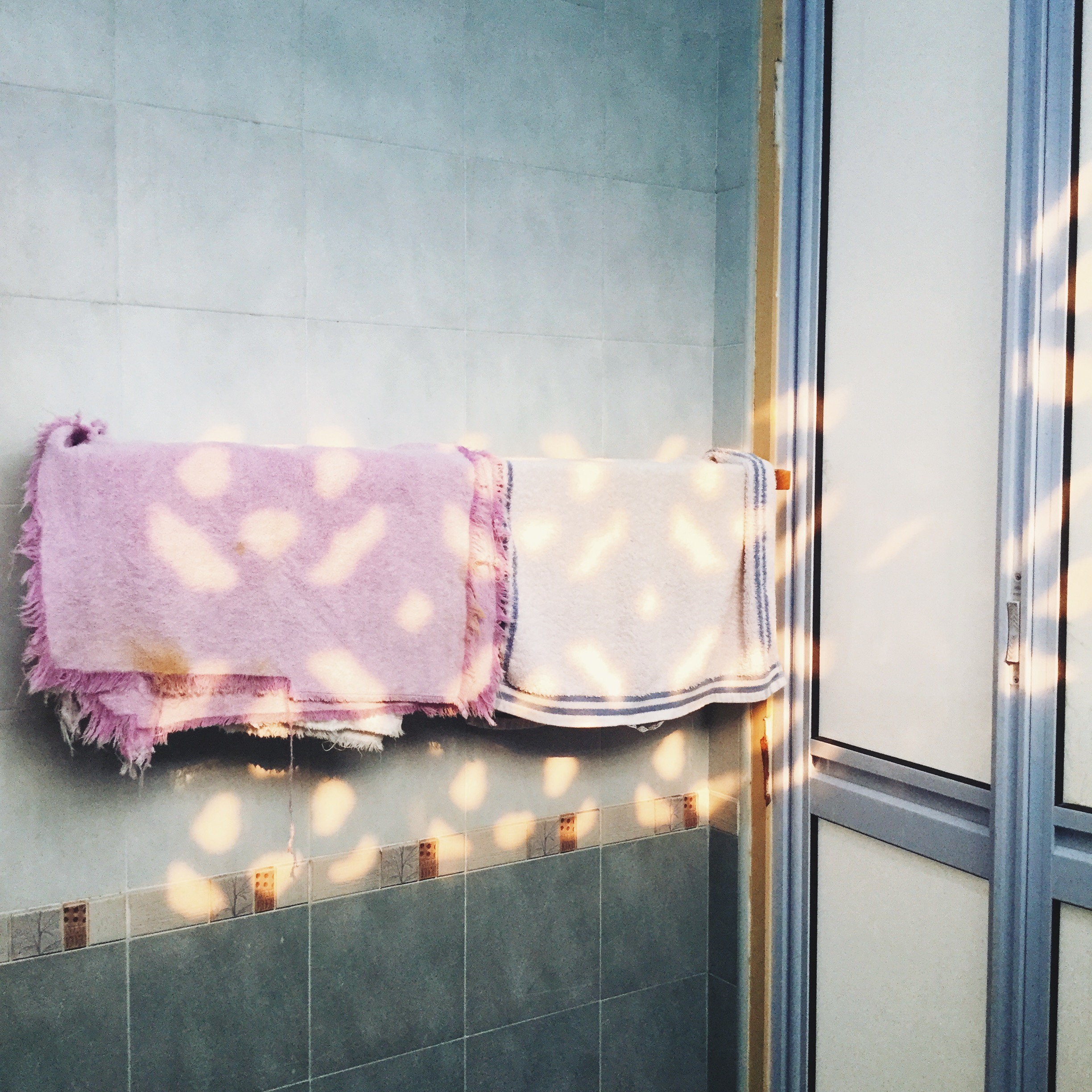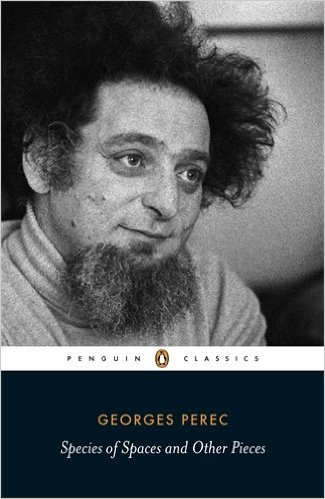Notes on George Perec's Species of Spaces and Other Pieces
academia space phenomenologyPerec, Georges, Species of Spaces and Other Pieces (Penguin Classics, 2008)
Perec’s text here reads as a beautiful taxonomy of spaces, but markedly avoids writing this taxonomy as a list of definitions. Instead, he navigates and dances around the spaces that we take for granted, the spaces that remain invisible to us until someone like himself comes along and — with his two writerly hands — cups its and holds it up gently to our faces.
One must also consider that in his textual meandering in the book is an act of cognition on his part, him thinking space through writing about space. He sets out to list typologies, call out relations and memories of spaces so that his particular spaces are made comprehensible outside of his own particular experience of these spaces. This hypomnesis of the spaces (and the memories of theses spaces) contained in his head thus take the form of this succinctly written book.
Of note is his treatment of doorways and beds in bedrooms, treating both as features within the topology of inhabited space (at one juncture, he muses about the relation between changing the position of the bed (p.24) and the fluidity of the room’s topology). This topological treatment of spaces and features of spaces is also taken up and placed under a Heideggerian lens by Jeff Malpas in his book, Heidegger’s Topology.

Space
“To live is to pass from one space to another, while doing your very best not to bump yourself.”1
This is how space begins, with words only, signs traced on the blank page. To describe space: to name it, to trace it, like those portolano-makers who saturated the coastlines with the names of harbours, the names of capes, the names of inlets, until in the end the land was only separated from the sea by a continuous ribbon of text. Is the aleph, that place in Borges from which the entire world is visible simultaneously, anything other than the alphabet?2
“Space as inventory, space as invention.”3
[…] Space as inventory, space as invention. Space begins with that model map in the old editions of the Petit Larousse Illustré, which used to represent something like 65 geographical terms in 60 sq. cm., miraculously brought together, deliberately abstract. Here is the desert, with its oasis, its wadi and its salt lake, here are the spring and the stream, the mountain torrent, the canal, the confluence, the river, the estuary, the river-mouth and the delta, here is the sea with its islands, its archipelago, its islets, its reefs, its shoals, its rocks, its offshore bar, and here are the strait, the isthmus and the peninsula, the bight and the narrows, and the gulf and the bay, and the cape and the inlet, and the head, and the promontory, here are the lagoon and the cliff, here are the dunes, here are the beach, and the saltwater lakes, and the marshes, here is the lake, and here are the mountains, the peak, the glacier, the volcano, the spur, the slope, the col, the gorge, here are the plain and the plateau, and the hillside and the hill, here is the town and its anchorage, and its harbour and its lighthouse…4
The Bed
The bed is thus the individual space par excellence, the elementary space of the body (the bed-monad), the one which even the man completely crippled by debts has the right to keep: the bailiffs don’t have the power to seize your bed. This also means — this is easily verified in practice — that we have only one bed, which is _our_bed. When there are other beds in a housee or an apartment, they are said to be guest beds or spare beds. It seems we only sleep well in our own bed.5
‘Lit = ile’* — Michel Leiris [*footnote: Literally ‘bed = island’, Leiris’s point being that the closeness in sound between the two French words has somehow determined the closeness (for him) in their meaning.] 6
The resurrected space of the bedroom is enough to bring back to life, to recall, to revive memories, the most fleeting and anodyne along with the most essential. The coenesthetic certainty of my [p. 21] body in the bed, the topographical certainty of the bed in the room, these alone reactivate my memory, and give it an acuity and a precision it hardly has ever otherwise.7
When, in a given bedroom, you change the position of the bed, can you say you are changing rooms, or else what? (cf. topological analysis)8
Inhabitation
What does it mean, to live in a room? Is to live in a place to take possession of it? What does taking possession of a place mean? As from when does somewhere become truly yours? Is it when you’ve put your three pairs of socks to soak in a pink plastic bowl?9
Any cat-owner will rightly tell you that cats inhabit houses much better than people do. Even in the most dreadfully square spaces, they know how to find favourable corners.10
A few years ago, one of my friends had the idea of living for a whole month in an international airport, without ever leaving it (unless, all international airports being by definition identical, to catch a plane that owuld have taken him to another international airport)[p.26] […]The interest of such an undertaking would lie above all in its exoticism: a displacement, more apparent than real, of our habits and rhythms, and minor problems of adaptation. It would quite soon become tedious no doubt.11
A space without a use
I have several times tried to think of an apartment in which there would be a useless room, absolutely and intentionally useless. It wouldn’t be a junkroom, it wouldn’t be an extra bedroom, or a corridor, or a cubby-hole, or a corner. It would be a functionless space. It would serve for nothing, relate to nothing.
For all my efforts, I found it impossible to follow thi sidea through to the end. Language itself, seemingly, proved unsuited to describing this nothing, this void, as if we could only speak of what is full, useful and functional.12
Doors
“We protect ourselves, we barricade ourselves in. Doors stop and separate.”13
The door breaks space in two, splits it, prevents osmosis, imposes a partition. On one side, me and my place, the private, the domestic (aa space overfilled with my possessions: my bed, my carpet, my table, my typewriter, my books, my odd copies of the Nouvelle Revue Francaise); on the other side, other people, the world, the public, politics. You can’t simply let yourself slide from one into the other can’t pass from one to the other, neither in one direction nor in the other. You have to have the password, have to cross the threshold, have to show your credentials, have to communicate just as the prisoner communicates with the world outside.14
-
Perec, Georges, SPECIES OF SPACES AND OTHER PIECES (Penguin Classics, 2008), p. 6. ↩︎
-
Ibid., “THE PAGE,” p. 13. ↩︎
-
Op cit. ↩︎
-
Op cit. ↩︎
-
Ibid., “THE BED,” p. 16. ↩︎
-
Ibid., p. 17. ↩︎
-
Ibid., p. 21–22. ↩︎
-
Ibid., p. 24. ↩︎
-
Ibid.. ↩︎
-
Ibid.. ↩︎
-
Ibid., “The Apartment,” p. 26–27. ↩︎
-
Ibid., p. 33. ↩︎
-
Ibid., p. 37. ↩︎
-
Ibid.. ↩︎
